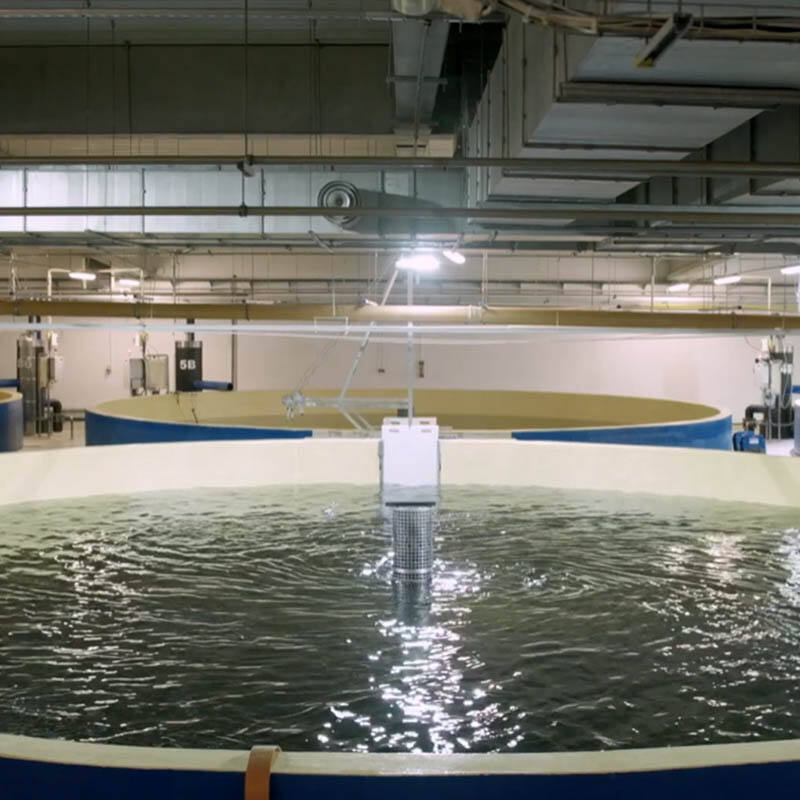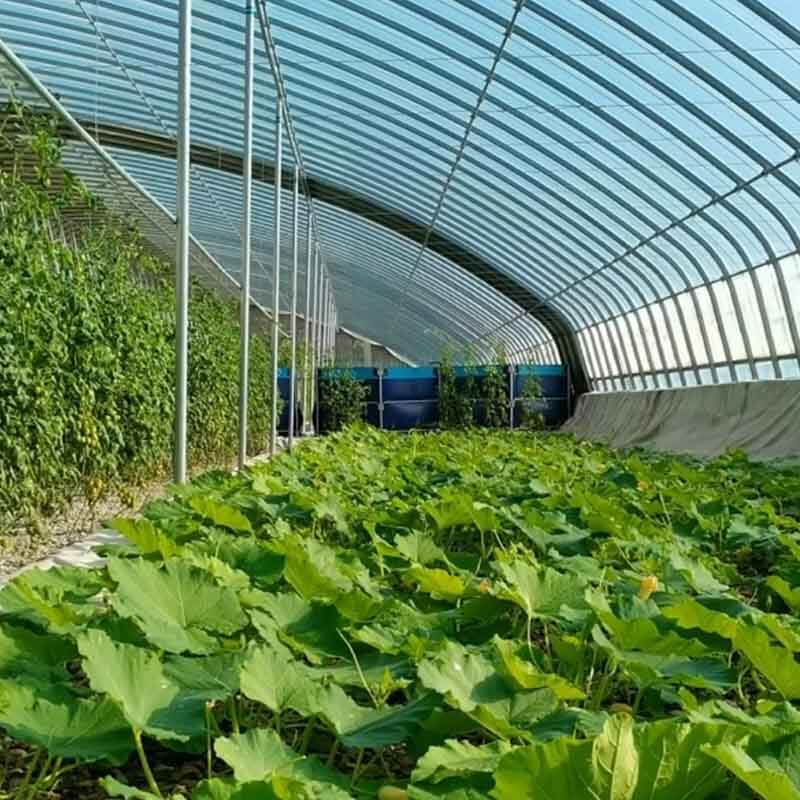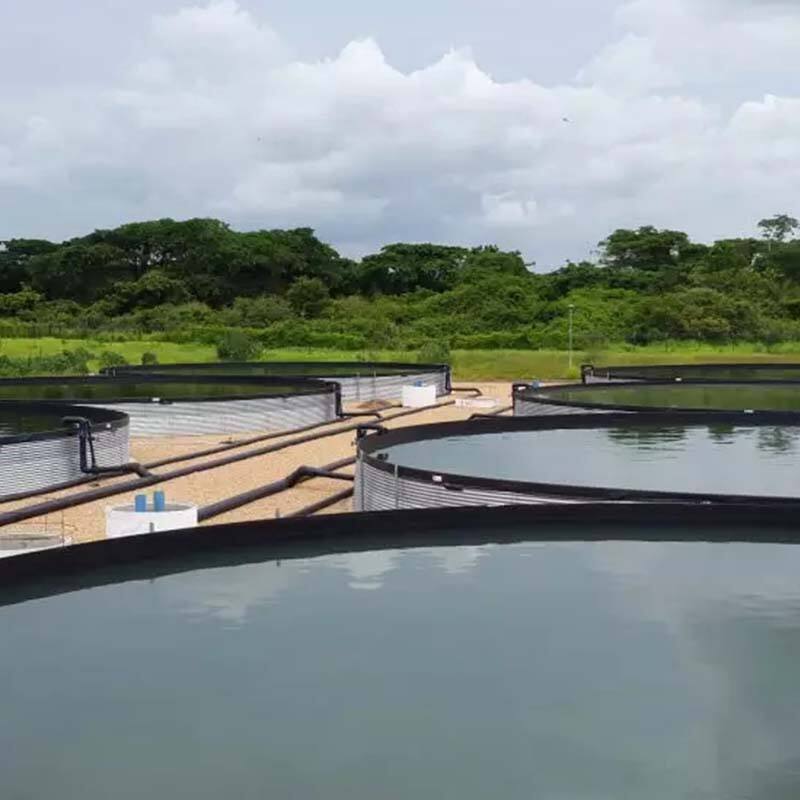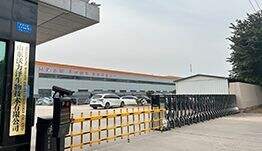How to correctly use the recirculating aquaculture system
The recirculating aquaculture model refers to a technology that uses physical, chemical, and biological means such as filtration, aeration, and biological purification in a relatively closed space to quickly remove the metabolic products and bait residues of the aquaculture objects, purify the water quality, and use flowing water for scientific management and high-density aquaculture under the premise of adding a small amount of water (generally the water reuse rate is above 90%). It simulates the natural ecological environment through technical means to achieve high-density, high-efficiency, and low-environmental-impact aquaculture. It is known as the "most promising aquaculture model in the 21st century" and is an important direction and future development trend for my country's aquaculture transformation, structural adjustment, and low-carbon green development.
Advantages of factory-scale recirculating aquaculture
1. Save water resources and improve utilization efficiency. By constructing a water circulation system, aquaculture wastewater is used for aquaculture again after physical, chemical or biological treatment, which saves water resources, reduces energy consumption and costs.
2. Reduce environmental pollution and protect the ecological environment. By purifying aquaculture wastewater, harmful substances can be effectively removed, and the pollution pressure of aquaculture on the environment can be reduced, which is conducive to protecting the ecological environment.
3. Enhance the disease resistance of farmed fish. It can maintain the relative stability of the water body, avoid drastic changes in water quality indicators such as temperature, salinity, and pH value caused by operations such as water changes, and reduce the stress response and disease of aquaculture organisms. By adding microbial preparations, the microbial community structure in the water body is adjusted to enhance the disease resistance of aquaculture organisms.
4. Realize the resource utilization of aquaculture waste. In the process of treating aquaculture wastewater, organic matter, nitrogen, phosphorus and other nutrients can be recycled and utilized.
5. It has strong adaptability and can be widely used in different aquaculture varieties and scales.

Water treatment technology for factory-scale recirculating aquaculture model
The main pollutants in aquaculture circulating water bodies include uneaten residual bait, excrement and secretions of farmed animals, and chemical agents, etc., which are mainly manifested in suspended solids, chemical oxygen demand, ammonia nitrogen, nitrite nitrogen, bacteria and viruses. Therefore, the main task of aquaculture circulating water treatment is to remove suspended solids and denitrify. Suspended solids are mainly removed physically, including sedimentation, physical adsorption, filtration, etc. Physical and chemical methods such as coagulation can also be used, and sometimes membrane treatment can be used as a terminal treatment process. Commonly used biological denitrification technologies include activated sludge method, biological filter, biological rotary disc, biological rotary drum, biological contact oxidation equipment, immobilized microorganism method and biological fluidized bed.
Key technologies and equipment for factory-scale circulating water
Mechanical filtration system. It refers to a water treatment system that first filters and disinfects water that has not been used in the aquaculture pond through water treatment equipment for multiple times before entering the aquaculture pond. Commonly used equipment includes microfilters, protein separators, etc.
Biological filtration system. The biological filtration system is a key technical link in the water treatment system. It uses a specific biological culture device to cultivate beneficial bacteria so that they can decompose harmful substances in the aquaculture water body, thereby achieving the purpose of purifying the water quality.
Water quality monitoring system. The online water quality monitoring system is a comprehensive online automatic monitoring system composed of a set of online automatic analysis instruments as the core, using modern sensing technology, automatic measurement technology, automatic control technology, computer application technology, and related special analysis software and communication networks. It can detect abnormal changes in water quality as early as possible, quickly make early warnings and forecasts to prevent downstream water pollution, and track pollution sources in a timely manner, so as to serve management decisions.
Disease prevention and control system. A set of overall management processes established to better prevent, monitor, control and manage diseases. It includes standardized operations such as detection, processing and data analysis.
Raw water treatment system. Refers to a raw water treatment system that first filters and disinfects water that has not been used in aquaculture ponds through water treatment equipment before entering the aquaculture pond.
Intelligent digital monitoring system. Including underwater monitoring and management monitoring. These monitoring data can be uploaded to the manager's computer or mobile phone at the first time through existing Internet technology to realize intelligent fishery management. In addition, there are constant temperature systems, oxygenation systems, automatic feeding systems, etc. The selection and application of different technologies and equipment need to be comprehensively considered according to actual conditions.Precautions for factory-scale recirculating aquaculture
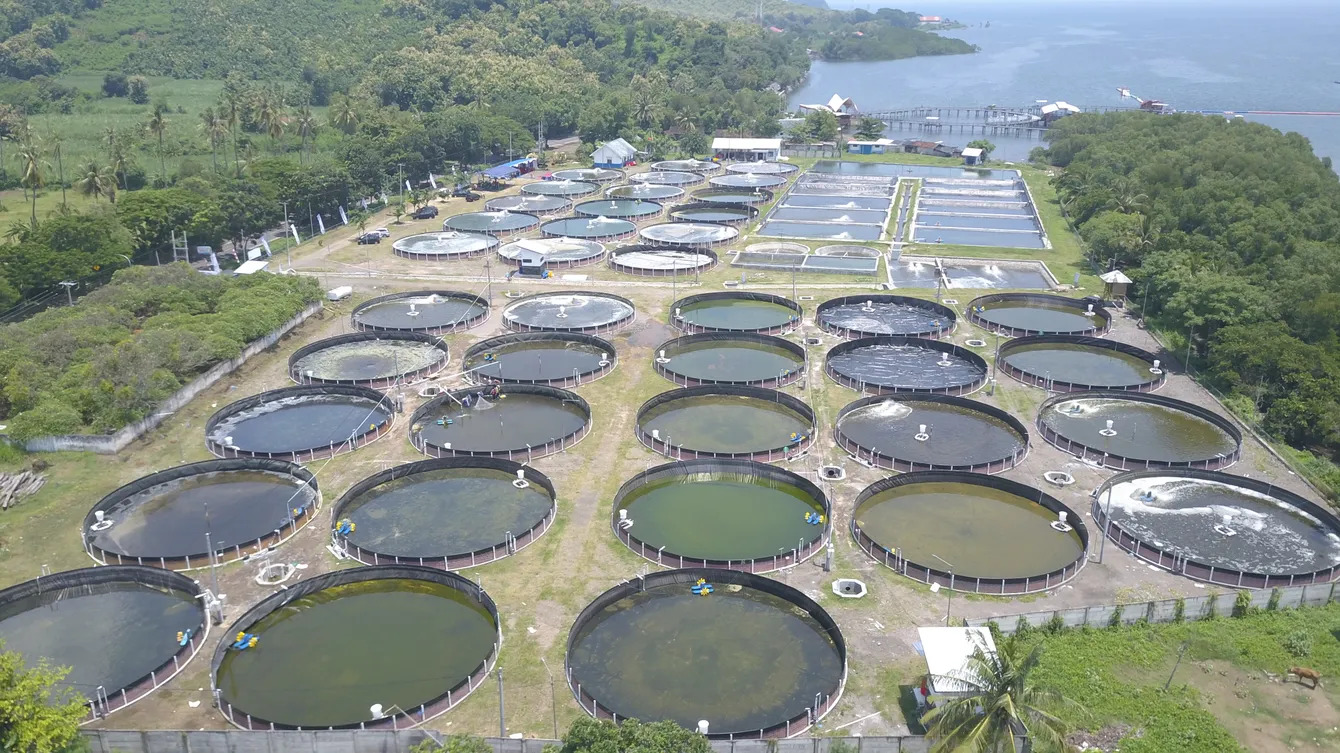
Precautions for factory-scale recirculating aquaculture
Farming density. Reasonably arrange the breeding density according to the type and growth stage of the farmed organisms to ensure the growth and health of the farmed organisms. Excessive breeding density will lead to problems such as deterioration of water quality and increase of diseases, affecting the breeding benefits.
Fish pond selection. Circular fish ponds can be made of polymer plastics such as PP or PE. Such fish ponds are clean, harmless, and easy to manage. Compared with civil square fish ponds, they are more cost-effective.
Water quality management. Feces, leftover bait, and debris are easy to clog purification equipment, and it is difficult to remove organic matter and ammonia nitrogen produced by decomposition. It is necessary to comprehensively consider the requirements of filtration efficiency, stability, degree of automation, etc. High-end breeding models need to be precisely designed according to water quality, load, structure and other conditions to achieve high efficiency, stability and low cost.
Recommended Products
Hot News
-
Is it true that raising fish in high-density canvas fish ponds is more efficient than ordinary ponds?
2024-12-16
-
Advantages of galvanized canvas fish pond
2024-10-14
-
High-density fish farming technology, fish pond cost, canvas fish pond, canvas pond, high-density fish farming
2024-10-12
-
Why choose flowing water high-density aquaculture
2023-11-20










































